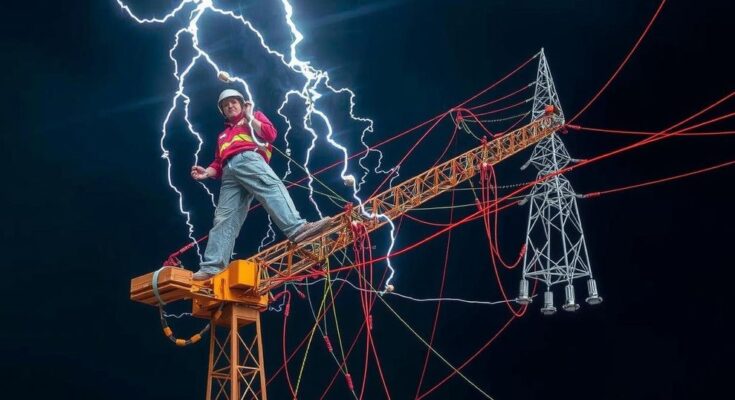The recent bomb cyclone in Western Washington caused power outages affecting over 500,000 residents, exposing weaknesses in the region’s electrical grid. Experts are calling for urgent upgrades to the infrastructure, including increased renewable energy capacity and better crisis communication among utilities. The cyclone’s impact underscores the need for innovation and significant investment as climate-related storms become more common.
The recent bomb cyclone that swept through Western Washington had severe consequences, knocking out power for over 500,000 residents and exposing critical weaknesses in the Pacific Northwest’s energy grid. High winds, which reached hurricane strength, uprooted trees, causing widespread damage to power lines, leaving many without electricity for extended periods. As homes, schools, and essential services struggled amid these outages, experts highlighted that investment in energy infrastructure is urgently needed to adapt to the evolving climate demands and the transition toward renewable energy sources.
Grid experts emphasize the necessity of modernizing the entire energy system, advocating for increased renewable energy capacity and enhanced transmission lines. With state mandates requiring that utilities achieve a carbon-free status by 2045, the focus must shift towards sustainable energy solutions such as hydropower, wind, and solar. Furthermore, the acute shortage of electricians capable of performing repairs exacerbates these challenges, hindering recovery efforts.
Nancy Hirsh, the executive director of the Northwest Energy Coalition, pointed out the increasing frequency of such storms due to climatic changes, further stressing the urgency of preventive measures. Although this specific storm was not directly linked to climate change, patterns indicate future storms will likely be influenced by climate factors, which will put unprecedented strain on the existing grid.
During the cyclone, extensive outages left an all-time high of over 170,000 residents in King County without electricity, leading to spoiled food and limited access to medical devices for vulnerable populations. The storm’s aftermath highlighted communication failures between utilities and emergency management, particularly concerning Puget Sound Energy’s delayed responses.
Looking forward, industry leaders are advocating for innovations such as localized battery storage and microgrid systems to enhance grid resilience in the face of repeated outages. The ongoing push for electrification of daily life must be paired with meaningful improvements to the grid, ensuring that outages are infrequent and brief. Current debates on the continued reliance on natural gas as a backbone for electricity generation should instead foster discussions toward sustainable practices to mitigate climate impacts.
Ultimately, a systemic change is required to avoid repeating the failures observed during the bomb cyclone, prompting leaders to urge for substantial investments and innovative solutions to build an energy grid that meets future demands and withstands extreme weather events.
Recent extreme weather patterns have revealed significant vulnerabilities in energy infrastructure, particularly as the Pacific Northwest experiences increasingly severe storms. The emergence of the bomb cyclone has not only caused massive power outages but has raised alarming concerns over the preparedness and resilience of the electrical grid against natural disasters. As utilities strive to transition from fossil fuels to renewable energy, the urgency for upgrading existing systems has become paramount. This scenario underscores the pressing need for a comprehensive assessment of energy resources and infrastructure to safeguard against future disruptions.
In conclusion, the bomb cyclone that affected Western Washington has highlighted major deficiencies in the region’s electrical grid, emphasizing the urgent need for substantial upgrades and the integration of renewable energy sources. Improved communication protocols among utilities and emergency response teams are necessary to avert future failures. As climate change exacerbates the frequency of extreme weather events, leaders must prioritize innovative strategies to fortify the energy grid, ensuring reliability and sustainability for all communities vulnerable to power outages.
Original Source: www.seattletimes.com




